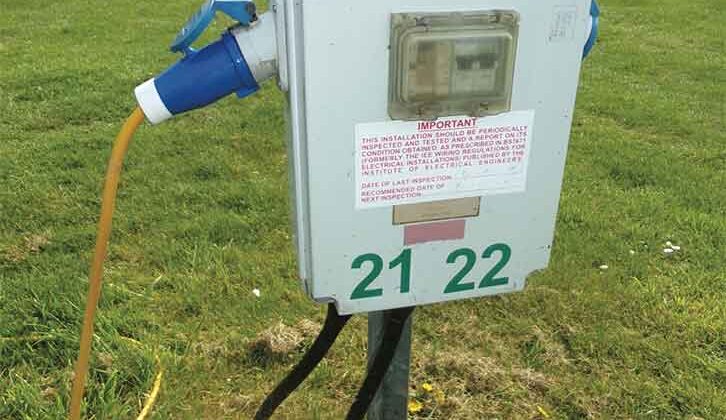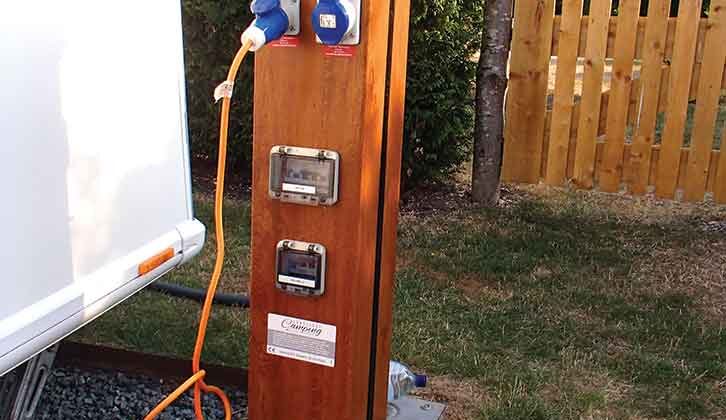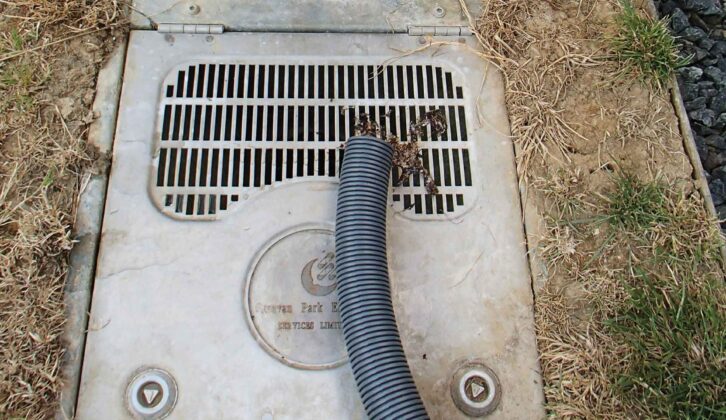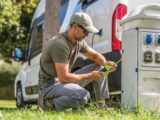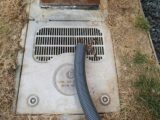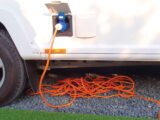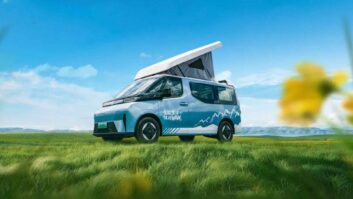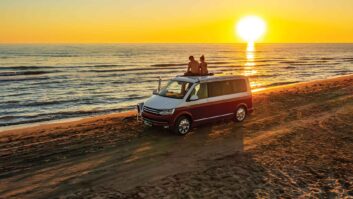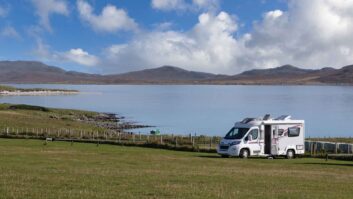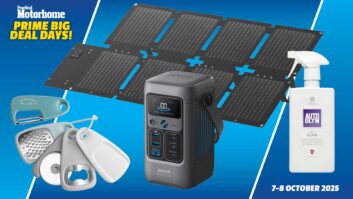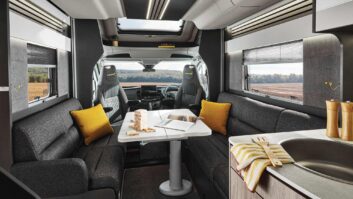For those of us who aren’t experts in off-gridding, electric hook-up for a campervan or a motorhome is a power lifeline, an umbilical cord to civilisation.
Plug in to the campsite’s electricity supply and you have a pitch power source that can run your lights, microwave and fridge, as well as your chosen source of entertainment, be it the best motorhome TV or the best campervan projector… but perhaps not all at the same time.
You see, there’s a fair amount of know-how needed to use campsite electrics effectively and avoid the all too common cut-off – a motorhome mistake to be avoided, if possible!
What is electric hook-up?
Electric hook-up (EHU) points are outdoor power sockets, usually rated to supply 16A (approximately 3.5kW) of electricity in the UK, although some campsites will provide 10A or even 6A, especially in Europe.
This is a simple system, designed to deliver 230V AC electricity via underground cables throughout the site to the supply post on each pitch. Sometimes these posts will have two outlets or more, so they can connect to neighbouring pitches. These sockets are housed in robust waterproof posts, which might be lockable.
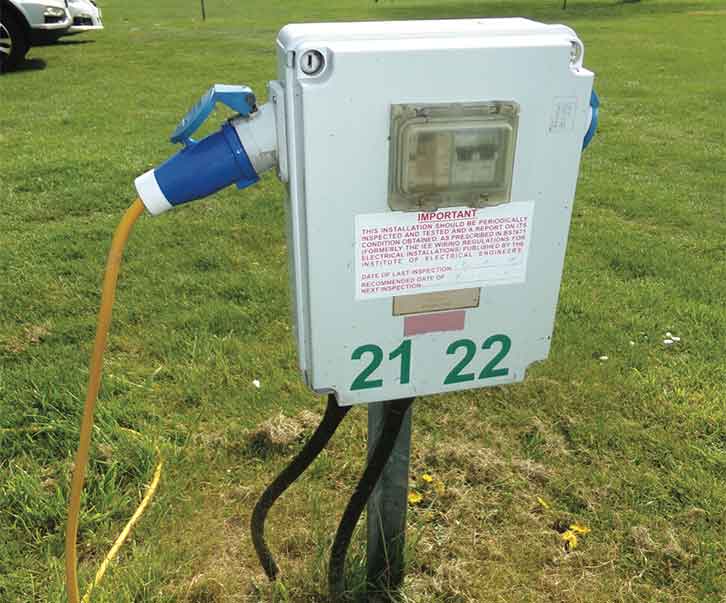
The posts are designed to deliver power to guests staying on that pitch, by connecting the site’s distribution board to your ’van. For safety, EHU posts are protected by circuit breakers and earth-leakage devices.
If you’re wondering, do campervans need electric hook-up, the major benefit is that EHU allows you to power up the appliances and systems you need to run in your motorhome using the higher-voltage campsite electricity, instead of having to deplete your 12V campervan leisure battery (which could in turn flatten your vehicle battery) or requiring an inverter.
This includes heaters, chargers, lights and fridges. It also enables you to charge your leisure battery and operate 12V appliances via the onboard transformer.
Connecting to an electric hook-up
You’ll need a specific cable, which is commonly known as a mains hook-up lead, to connect your motorhome to the EHU post. These cables are usually orange for clear visibility and have three-round-pin connectors on each end, one male and one female.
The male connector goes into the site socket, while the female one goes into the socket on the side of the ’van. Standard leads are 25m long; the wires inside are 2.5mm² in cross-section. It’s important to avoid using thinner or longer cables, as they can cause voltage drop and heat build-up.
Your lead should be CE-marked and must comply with BS EN 60309. You can expect to pay around £30 to £40 for a new power lead.
These are the steps you should take each time you hook up your vehicle:
1 First, you should check that your ’van’s RCD/isolator switch is turned OFF.
2 Uncoil the hook-up lead (a coiled cable with current flowing through it might overheat, especially if you are using high-current devices).
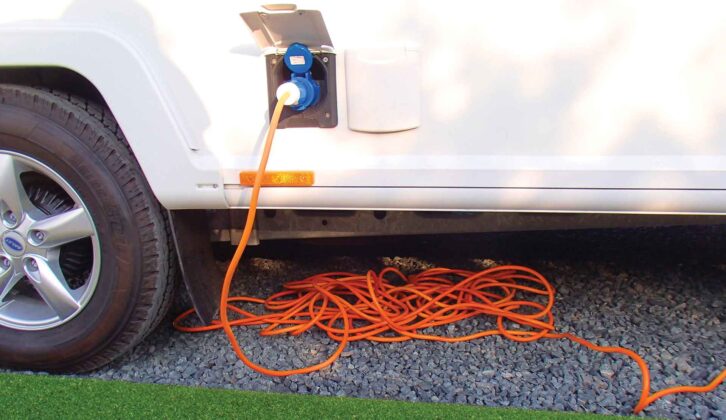
3 Insert the connector (the female end) into the socket on the side of the ’van.
4 At the EHU post, lift the spring-loaded cover of the electricity outlet and insert the male plug of the supply cable. You should always carry out this procedure in that order, to avoid having to carry a power supply lead with a live connector to the motorhome.
5 Now you can switch your motorhome’s RCD/isolator switch to the ON position.
Note: If you are ever in any doubt about hooking up your ’van, enquire at the site office, where the staff can advise.
How to disconnect from electric hook-up
When you are vacating your pitch, these are the steps you should take each time you need to disconnect your motorhome from the EHU:
1 First, turn your motorhome RCD/ isolator switch to the OFF position.
2 At the EHU post, press the release button and pull out the lead.
3 Disconnect the power supply cable from the motorhome.
4 Coil up the lead and store it away somewhere it won’t get damaged.
Note: Never use domestic extension leads or modify the cable.
How electric hook-up connects to your campervan or motorhome
The hook-up connector socket on your ’van is on an external wall, often on the nearside of the vehicle.
Once the motorhome is connected, power flows into a consumer unit, similar to a domestic fuse box, fitted with miniature circuit breakers and a residual current device (RCD).
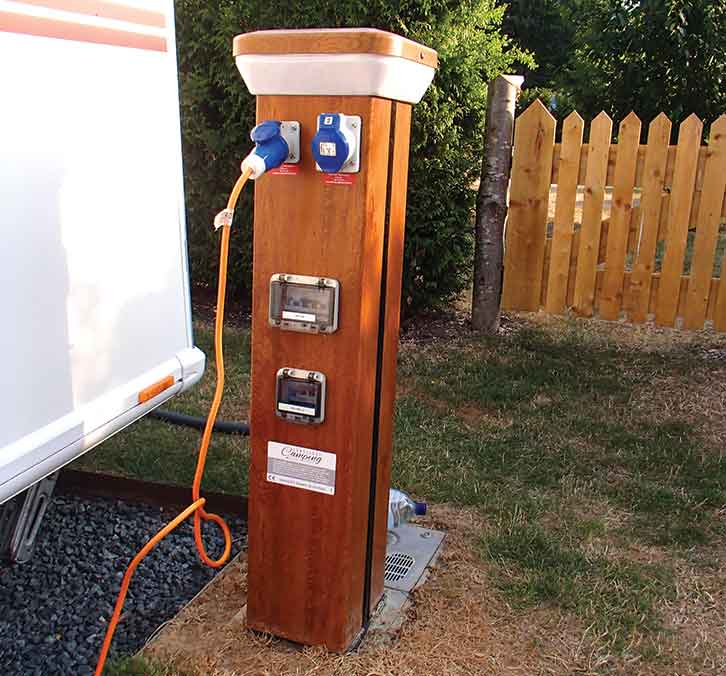
From there, it feeds the 230V sockets and a power supply unit that converts mains power to 12V DC. This runs the motorhome’s internal 12V systems and charges up the leisure battery.
The best motorhomes nowadays also include reverse polarity indicators, as some Continental campsites may wire live and neutral in reverse.
UK motorhomes can usually cope with this, but more sensitive equipment might not. I’ve never had any problems in France, but if you are touring further afield, you might need to take care.
Potential problems
Overloads are common with campsite electrics. This is because the site supply has a set amp rating, so if you turn on a number of appliances which together draw more than that current rating, the EHU will trigger its cut-out for safety.
Experienced motorhomers tend to know which of their appliances they can operate at the same time and still stay within the limits.
Well-appointed, modern campsites, such as Club sites in the UK, typically provide a 230V 16A EHU network, enough to run several major appliances in your motorhome at once.

Head to Europe, however, and you will find that some campsites might only operate 6A systems – although thankfully, this is becoming rarer. Personally, I haven’t been anywhere
on the Continent with lower than 10A.
Occasionally, your EHU might trip out because of an electrical fault, for example, because of a damaged hook-up lead or a blown fuse in the vehicle’s consumer unit.
If you have recurring power failures, you should contact a technician to check your system.
Some sites control power centrally, so you might need to contact staff to restore supply. Never attempt to open locked EHU posts or access the wiring.
When you are travelling abroad, check with your destination campsite whether you need an adaptor.
What to do if your campervan electric hook-up trips out
If your motorhome overload trips the EHU’s cut-off, you will have go to the EHU post to reset it. This is normally just a case of flicking a switch, having first made sure that the ‘offending’ appliance has been turned off or disconnected from the supply.
If you have any problems, contact the staff at the campsite office.
Know your appliance power ratings
It helps to have some knowledge of basic maths to allow you to calculate which appliances you will be able to run in your motorhome without tripping the cut-off, especially if you’ve asked yourself questions such as “can you use an air fryer in a campervan?” or “can you use a microwave in a campervan?”.
Campsites in the UK and Europe typically provide 230V electric hook-up. The variance comes in the amperage the EHU delivers. As mentioned, in the UK this is usually 16A.
In the UK, as Volts (V) x Amps (A) = Watts (W), you’ll usually have 3680W to play with (230V x 16A = 3680W). However, if you only have 10A hook-up, you’ll have 2300W allowance, while on a 6A campsite, you’ll have just 1380W.
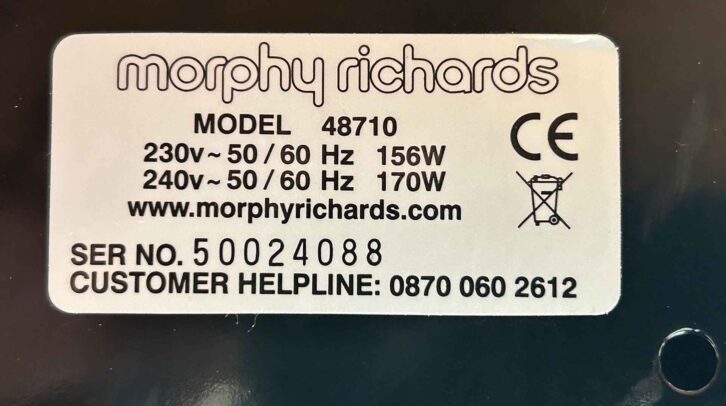
Now that you know your limit, you can assess which of your appliances you will be able to run at the same time while in your ’van.
Here are some typical wattages for a selection of popular appliances:
- TV 50W 0.2A
- Fridge 125W 0.5A
- Microwave 1200W 5.2A
- Kettle (low wattage) 750W 3.3A
- Battery charger 100W 0.4A
- Hairdryer (low wattage) 800W 3.5A
- Hair straighteners 150W 0.75A
- Nutribullet 1000W 4.4A
- Slow cooker 156W 0.6A
Heating and air conditioning can consume large amounts of electricity, so should be limited to 500W. For heating with dual-fuel boilers, using your gas to boost the heat output is an effective way to manage this.
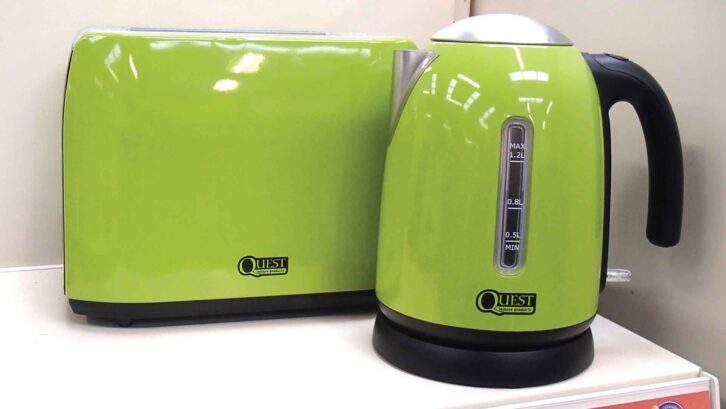
Note: A wide range of 12V appliances are available for touring. These help to keep you within wattage limits and conserve energy for off-gridders relying on leisure battery power. You can also find lower wattage options if you’re after popular cooking appliances – for instance, there are a good number of low wattage air fryers to choose from.
Electrical safety rules
- Store only clean, dry cables
- Never daisy-chain cables together
- Uncoil cables fully to avoid the risk of heat build-up
- Don’t run cables through your vehicle’s windows or doors
- Check your RCD regularly by pressing the test button
- Always unplug from the EHU post first when disconnecting
- Keep connections dry
- Always plug your lead into the motorhome first when connecting
- Don’t use domestic multi-gang extension blocks, especially outside your motorhome
- Use only leads with moulded, waterproof plugs and 2.5mm three-core cable
After you’ve sorted out how to power your appliances, you can start thinking about ensuring you have good access to the internet so you can stream on your favourite gadgets – I explain the process in my guide to getting internet in a motorhome.
Lead image: Shutterstock/Virrage Images
Future Publishing Limited, the publisher of Practical Motorhome, provides the information in this article in good faith and makes no representation as to its completeness or accuracy. Individuals carrying out the instructions do so at their own risk and must exercise their independent judgement in determining the appropriateness of the advice to their circumstances. Individuals should take appropriate safety precautions and be aware of the risk of electrocution when dealing with electrical products. To the fullest extent permitted by law, neither Future nor its employees or agents shall have any liability in connection with the use of this information. Double check any warranty is not affected before proceeding.
If you’ve enjoyed reading this article, why not get the latest news, reviews and features delivered direct to your door or inbox every month. Take advantage of our brilliant Practical Motorhome magazine SUBSCRIBERS’ OFFER and SIGN UP TO OUR NEWSLETTER for regular weekly updates on all things motorhome related.

